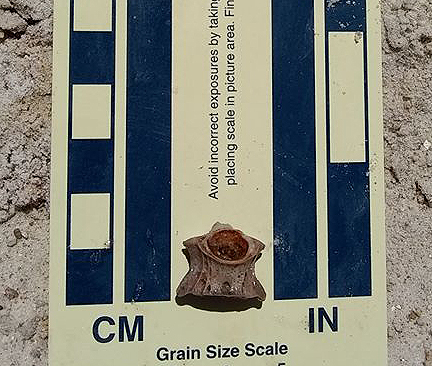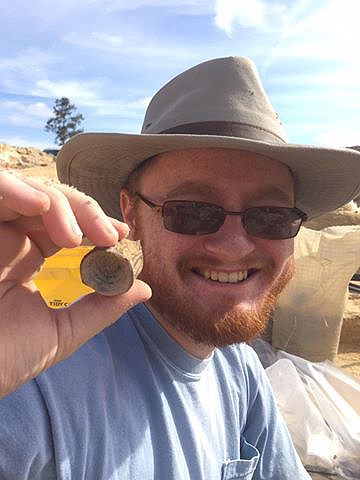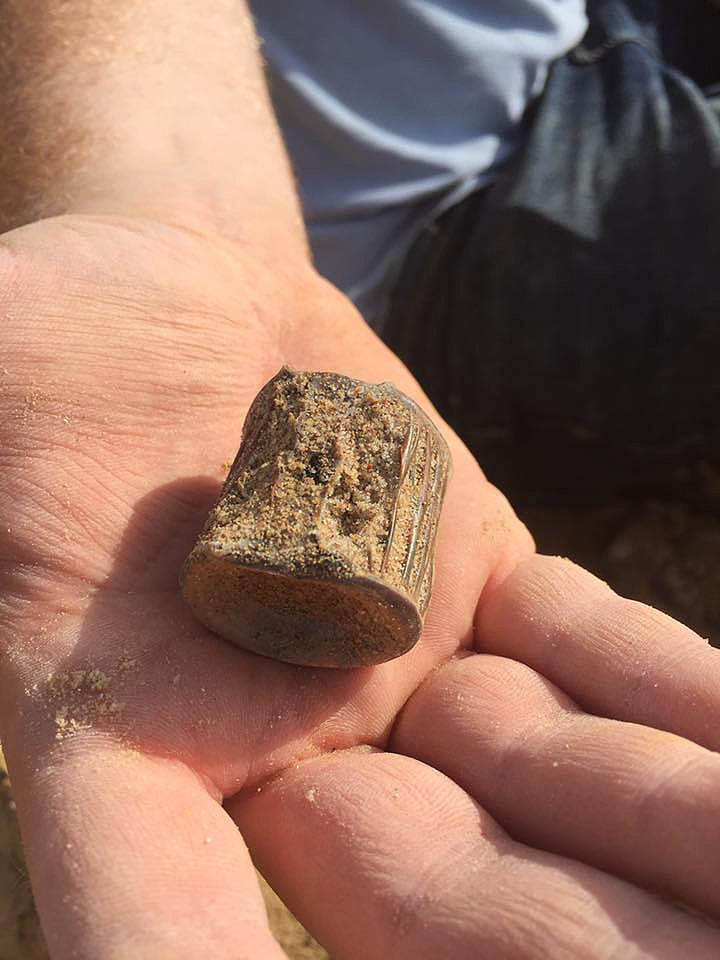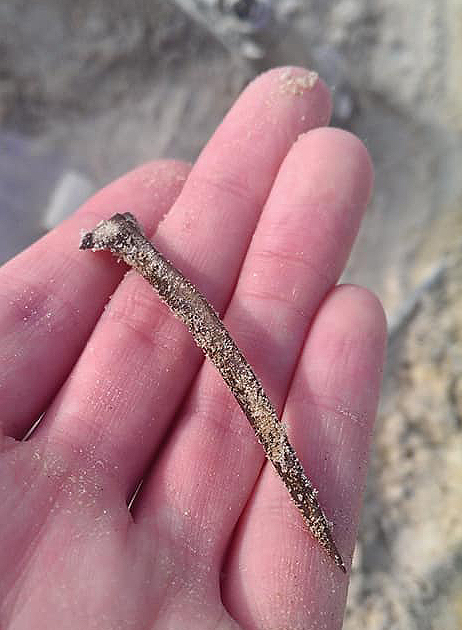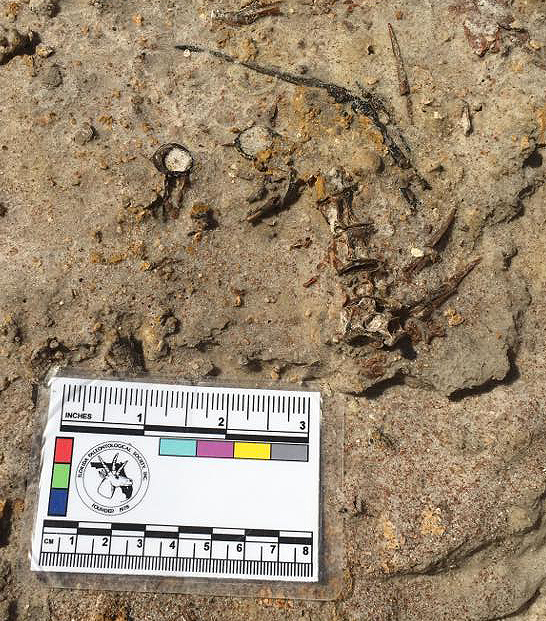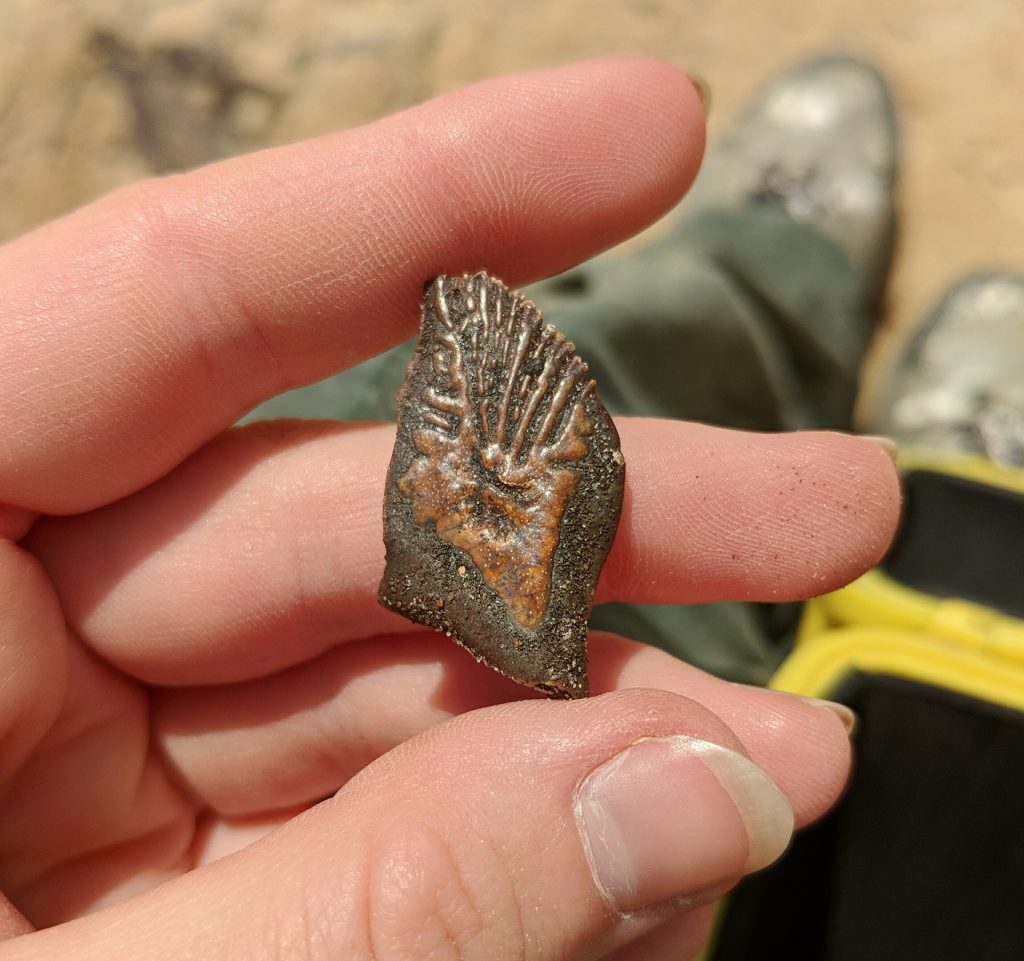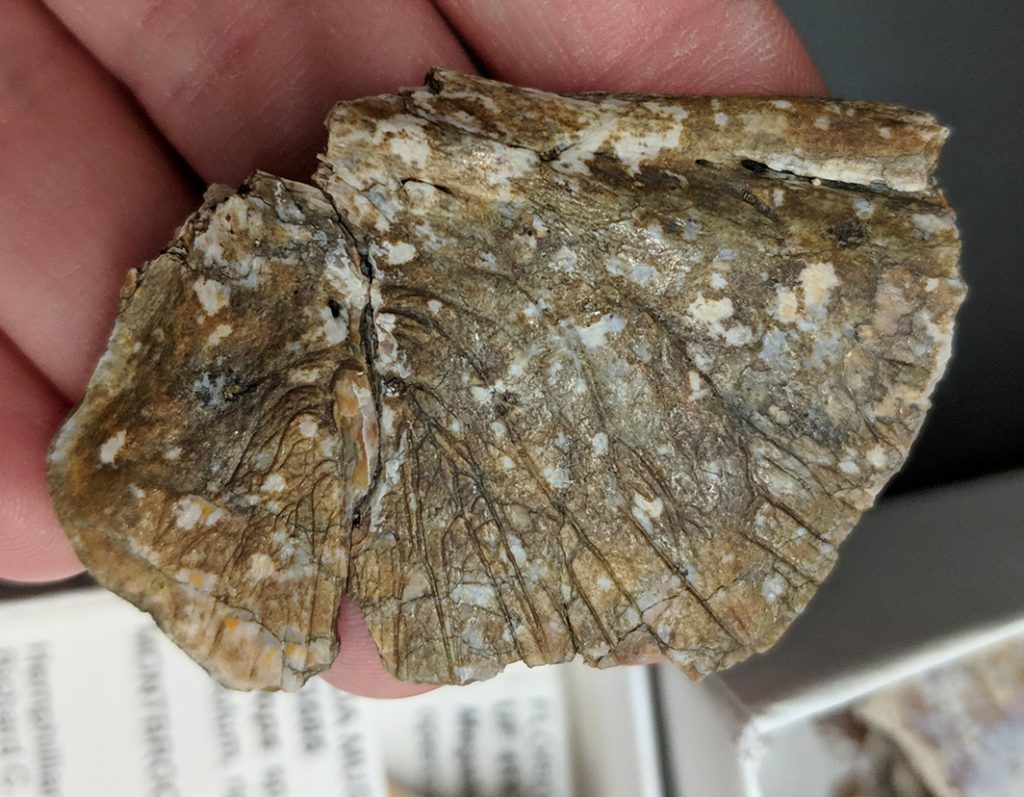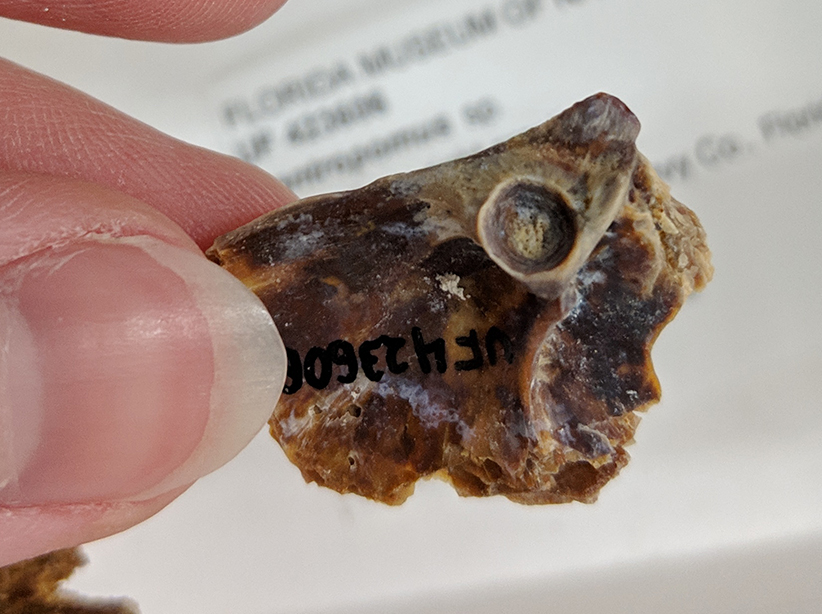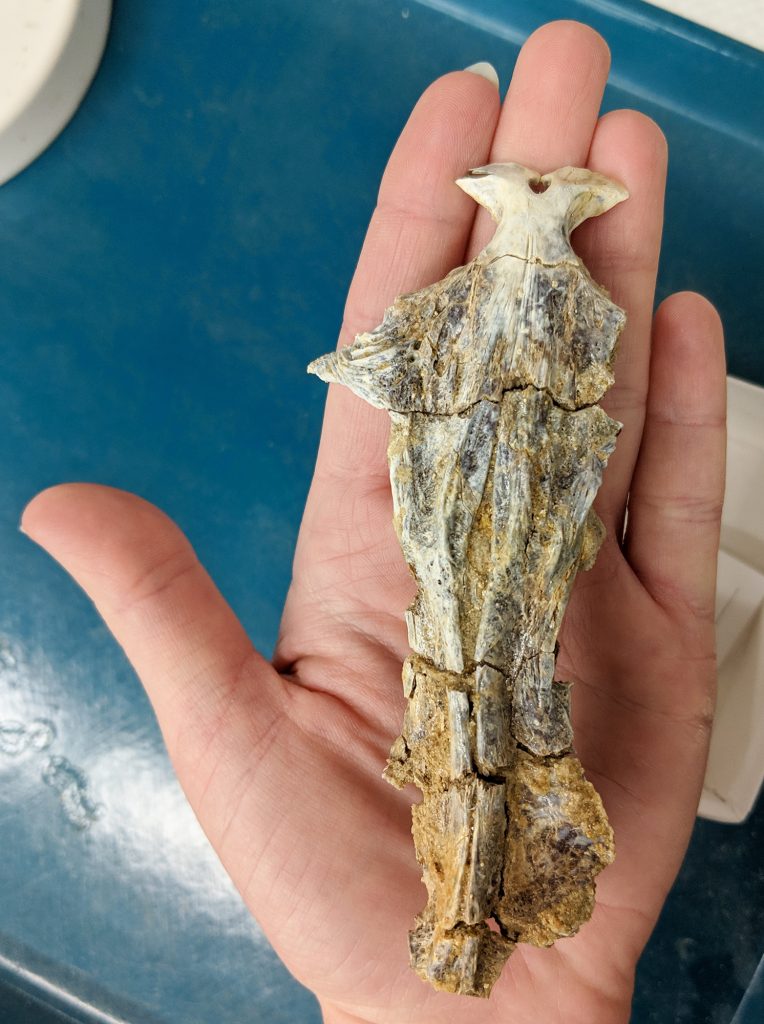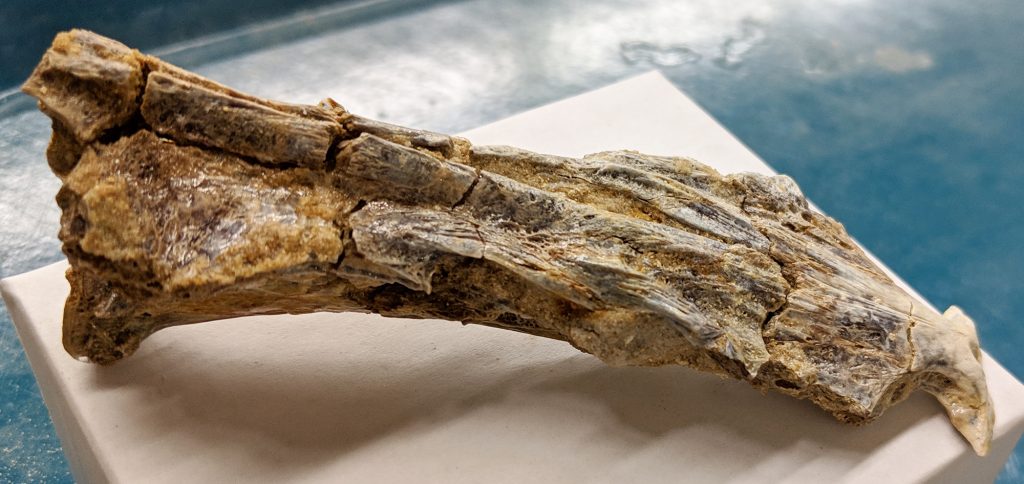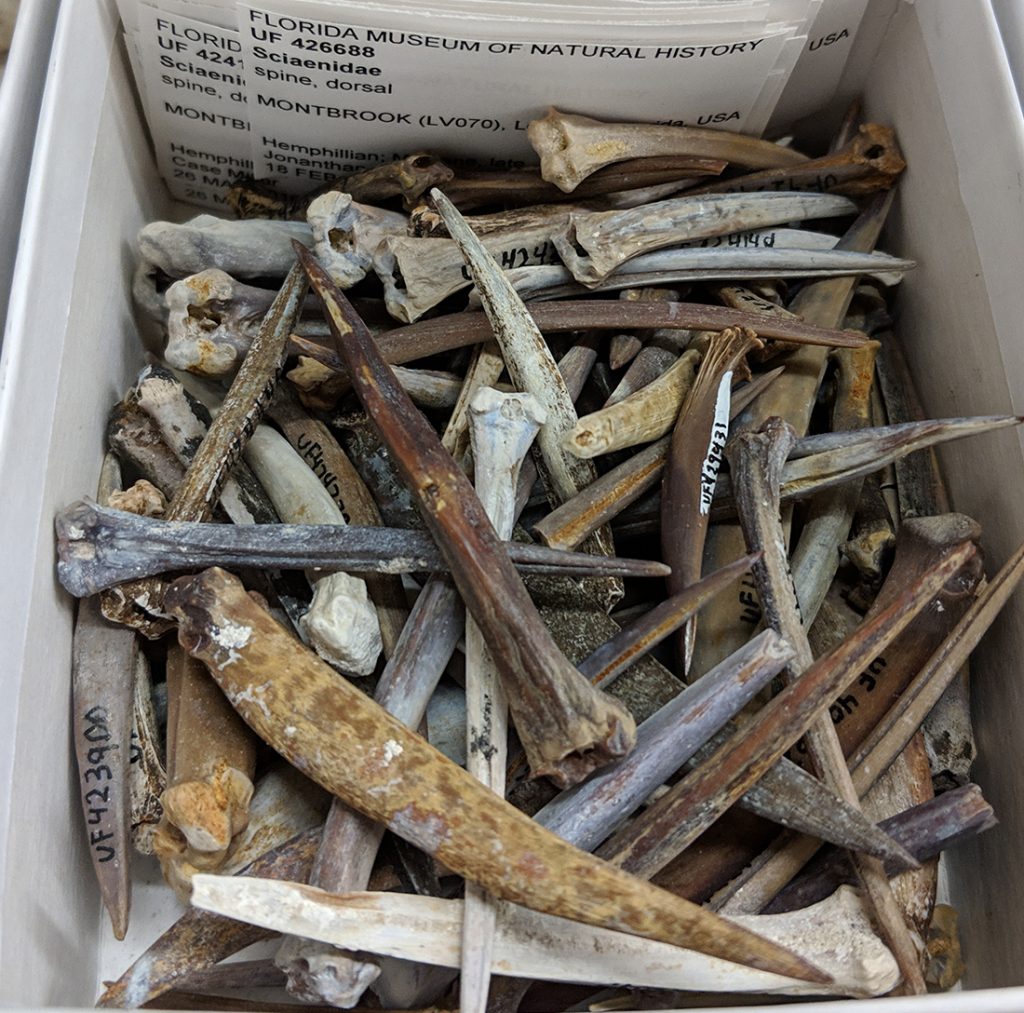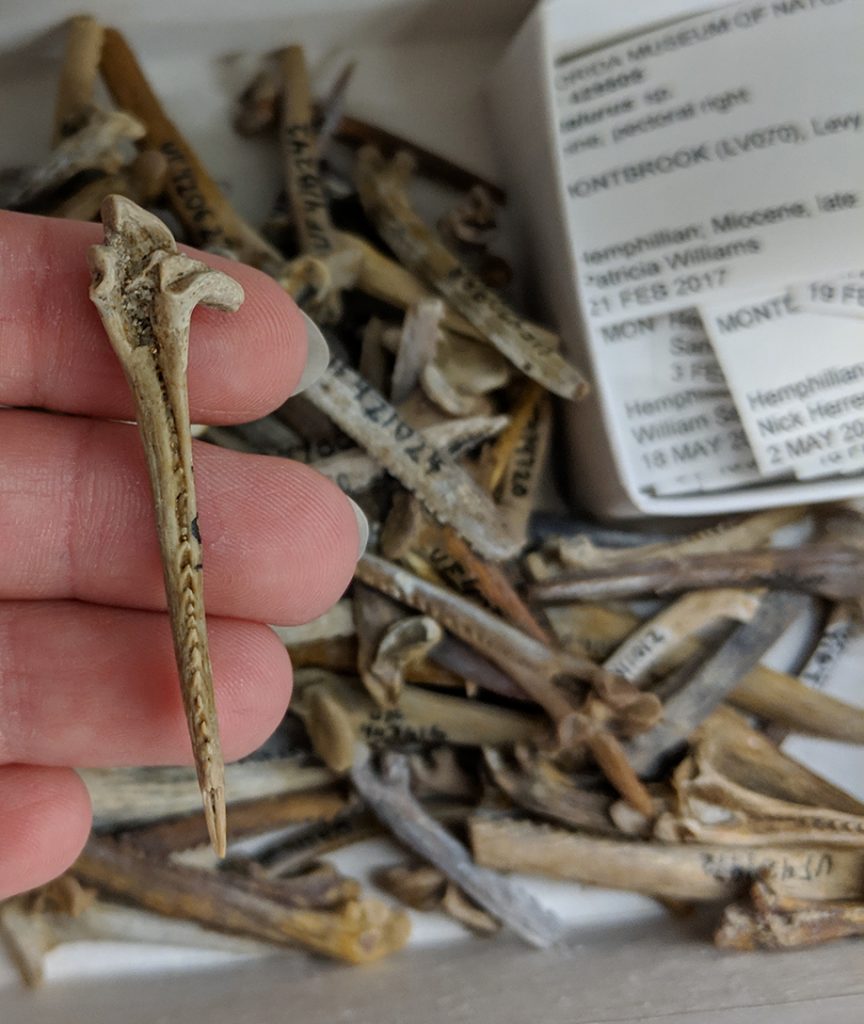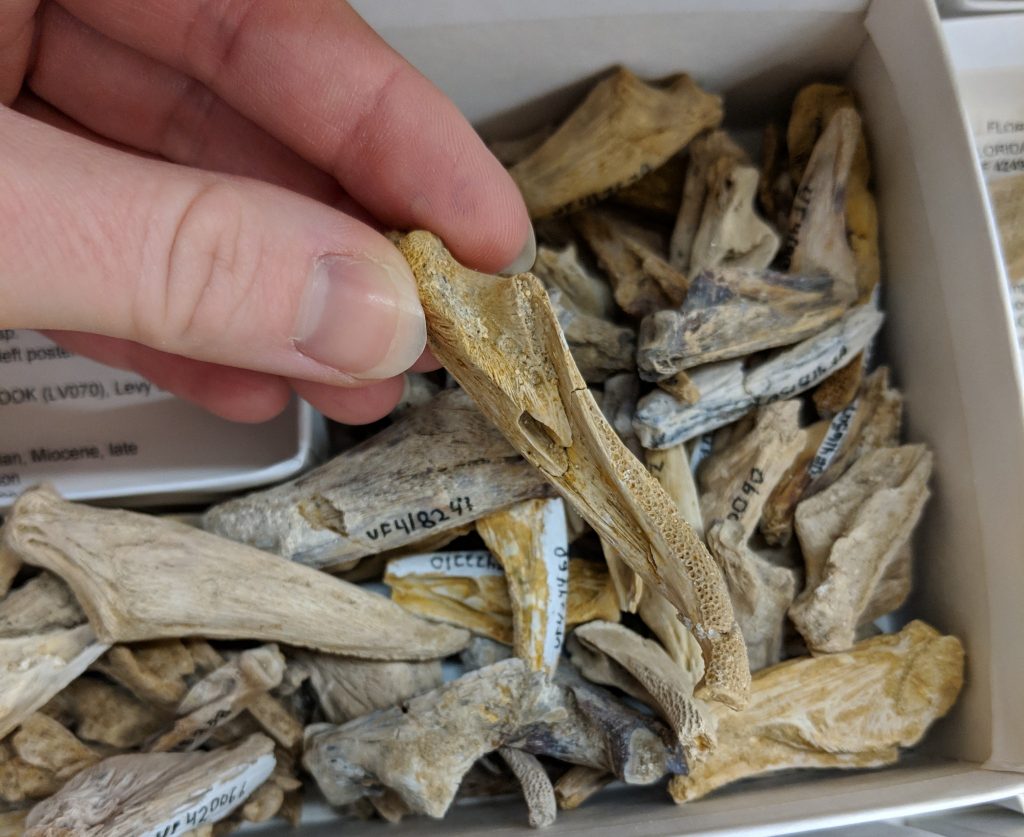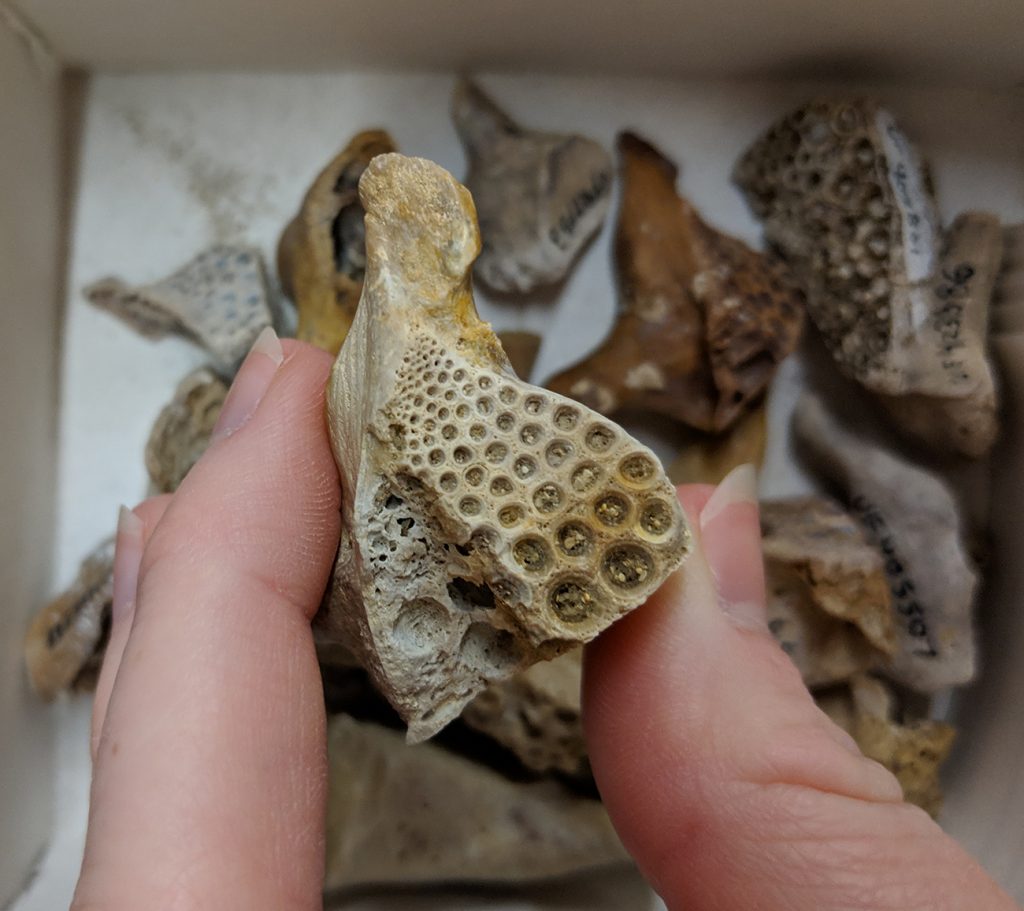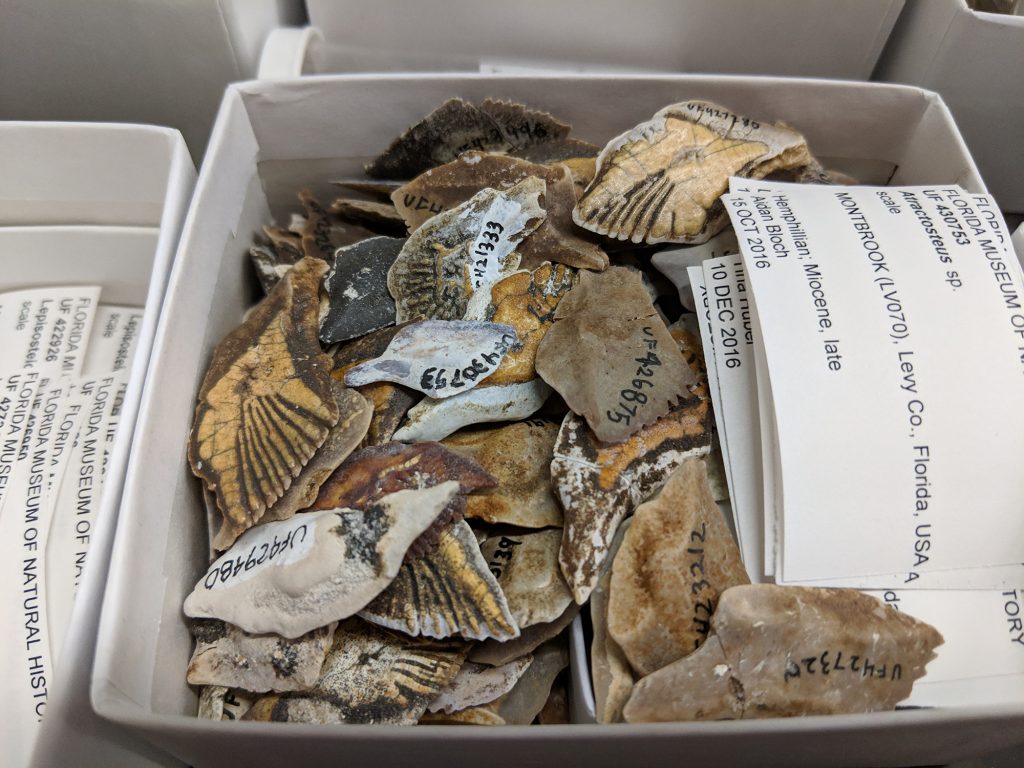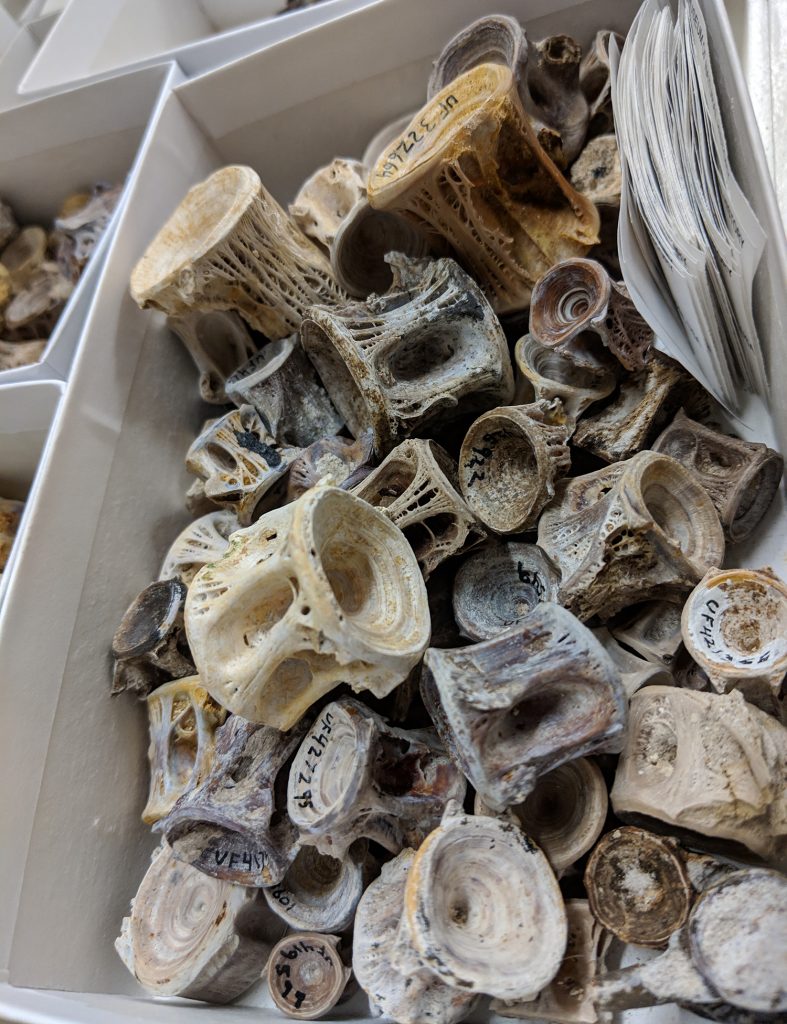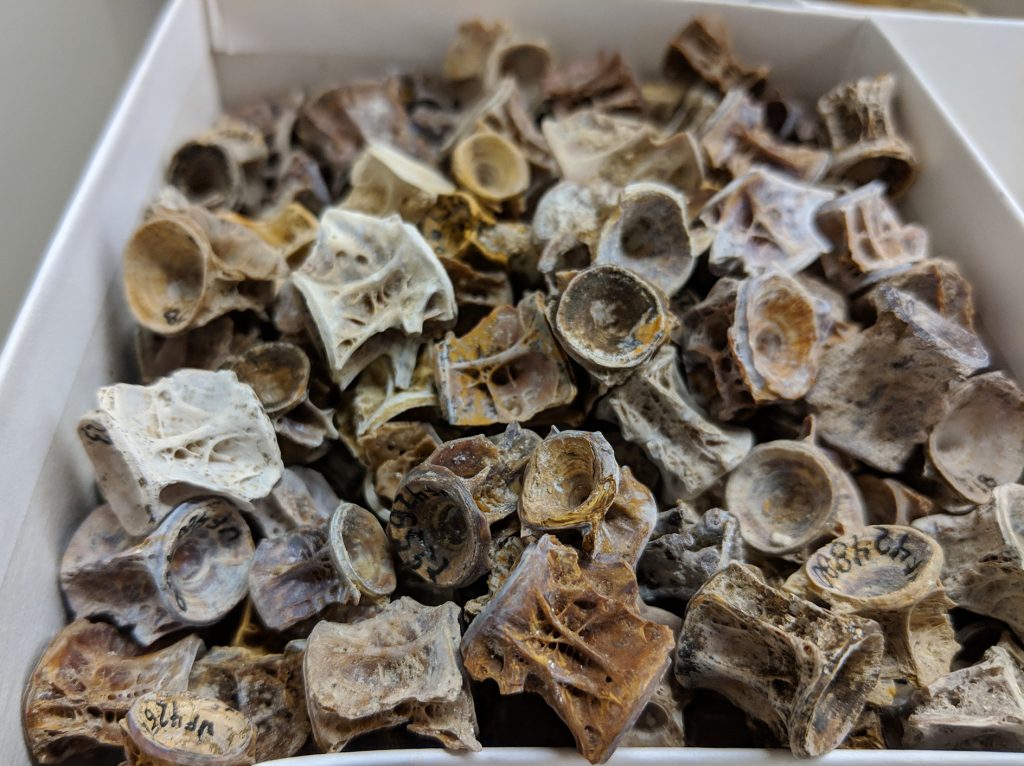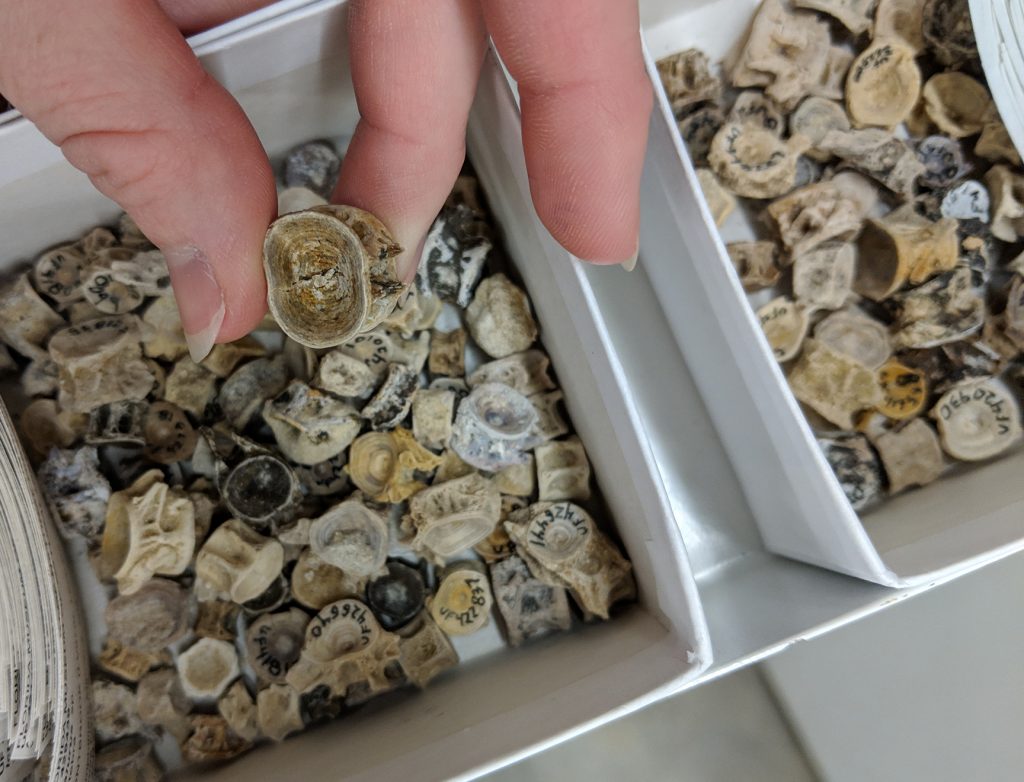The great tragedy of the Montbrook dig site is that we showed up five million years late to what would have been a pretty epic fish fry. Bony fish (Osteichthyes) fossils make up about a third of the cataloged fossils from the site, (about 7200 specimens). Most of these cataloged specimens are macro-fossils, however, work has shifted to the identification of micro-fossils from the site.
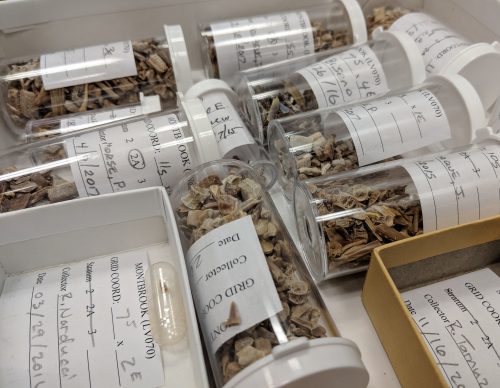
Regarding the Bones of the Bony Fish
The Montbrook site is teeming with fossilized fish bits, however, the shortage of complete skeletons means that identification relies on random bones here and there.
The skulls of most bony fish are composed of many small bones, and while some parts such as the operculum (gill cover) do occasionally show up, most of them are too dainty to fossilize well. The main exception to this are the neurocrania of catfish (Ictalurus), which are relatively large and sturdy. Dorsal and pectoral spines are not uncommon, however they’re typically only diagnostic to the family level. Jawbones, such as the mandible (lower jaw) and pharyngeals (crushing plates), are great for identification but don’t show up as often as would be liked.
The bread and butter of the fish identification business are the vertebrae, specifically the centrum (the middle, can-looking bit).
Sturdy, abundant, and unique to each genus, vertebrae make-up the majority of the cataloged specimens.
Notes on Important Fish
Atractosteus
The largest bony fish swimming the placid waters of Montbrook was Atractosteus, the alligator gar.
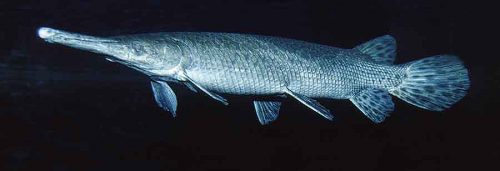
It and its smaller cousin, Lepisosteus (also present at Montbrook), represent a family that has survived since the late Jurassic relatively unchanged. Like their modern-day descendants, these Atractosteus were rapid ambush predators with a dietary preference for whatever they could fit in their mouths. Topping out between two and three meters, this heavily armored fish missile was a neat guy.
Aplodinotus
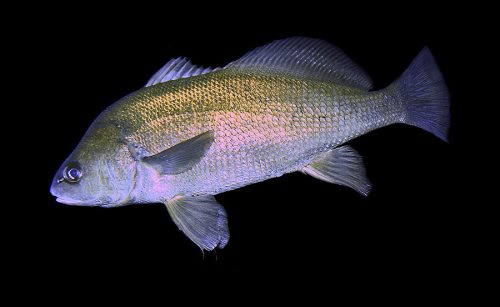
One of the most interesting fish at the Montbrook site is the Aplodinotus sp. which is one of the more common bony fish fossils. The only living Aplodinotus species is the freshwater drum, Aplodinotus grunniens, however, this drum shows several morphological differences, mainly in the shape of its pharyngeals. Based on these pharyngeals, a diet of crustaceans and soft-shelled bivalves (such as mussels) seems fairly plausible.
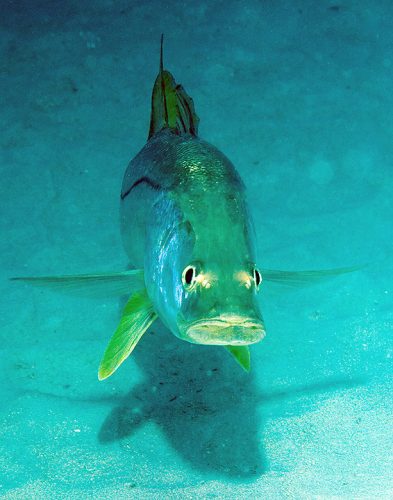
Centropomus
The snook of Montbrook were in all likelihood very similar to the snook of modern Florida (a complete skeleton remains elusive). While most modern snook are predominantly marine, they are known to penetrate into brackish and fresh waters. The fairly consistent presence of snook vertebrae among the micro-fossils further suggests that the snook used the quiet Montbrook waterway as a spawning location, safe from saltwater predators.
Ictalurus
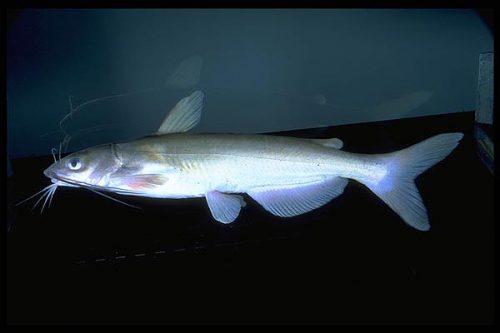
The members of the freshwater (and brackish water) catfish genera are some of the most common fish fossils at the Montbrook site. The neurocrania (discussed above), indicate that they were most likely the modern channel catfish, Ictalurus punctactus, or else very close relatives. Given their extreme abundance, these fish were likely the staple diet of the resident fish-eaters, such as the giant otter, Enhydritherium terraenovae.
